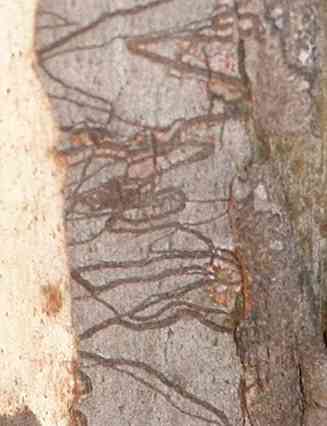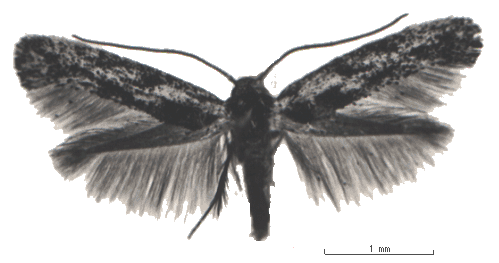These are the work of a very seldom seen insect. Ogmograptis scribula
( the wavy writing scribe")
is a tiny moth, only 1 to 2 mm long which lays its eggs between the old
and new bark of E. rossii.
On hatching, the larva tunnels between the layers of bark; the tunnels
are only exposed when the old bark layer falls off. Like other insects (along
with other invertebrates, as well as reptiles) Ogmograptis cannot
stretch its skin as it grows.
Instead, when its body gets too great to be contained in its old skin,
that skin splits and the grub emerges in a new skin, a size larger!
This growth by steps is evidenced in the sudden size increases we can see
in the diameter of the tunnels.

In December the grub pupates, although we are not even certain whether this takes place on the tree or in the ground. Pupation is the process whereby the larva spins a thread cocoon or chrysalis, within which its body literally breaks down into a "soup" of components, and reconstitutes into an adult insect. "By its works shall we know it indeed, since larva, pupa and moth are very rarely seen, though the signs of their life are known to everyone who has set foot on Aranda Bushland.
Why more scribbles in the year before? Perhaps more rain, so more moths to lay eggs in the bark.

The image is taken from the Australian National Botanic Gardens site. (link above)
The text is an adaptation from "Black Mountain A Walkers Guide" Canberra & South East Region Environment Centre, 1981.